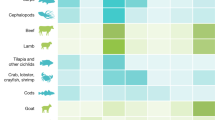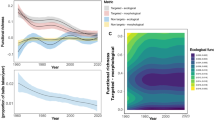Abstract
IN 1925 I reported to an oyster company that “in 1924–25 the whelk-tingle (Ocinebra (Murex) erinacea) was very abundant and very destructive. In my experiment ‘A,’ fully half of the brood of 1924 were found bored by the whelk-tingle, and it was obvious that most of the young oysters had been attacked in the early summer of 1925, since many of those bored had put on new growth.”
This is a preview of subscription content, access via your institution
Access options
Subscribe to this journal
Receive 51 print issues and online access
$199.00 per year
only $3.90 per issue
Buy this article
- Purchase on Springer Link
- Instant access to full article PDF
Prices may be subject to local taxes which are calculated during checkout
Similar content being viewed by others
Author information
Authors and Affiliations
Rights and permissions
About this article
Cite this article
ORTON, J. The Habits and Economic Importance of the Rough Whelk-Tingle (Murex erinaceus). Nature 120, 653–654 (1927). https://doi.org/10.1038/120653b0
Issue Date:
DOI: https://doi.org/10.1038/120653b0
Comments
By submitting a comment you agree to abide by our Terms and Community Guidelines. If you find something abusive or that does not comply with our terms or guidelines please flag it as inappropriate.



